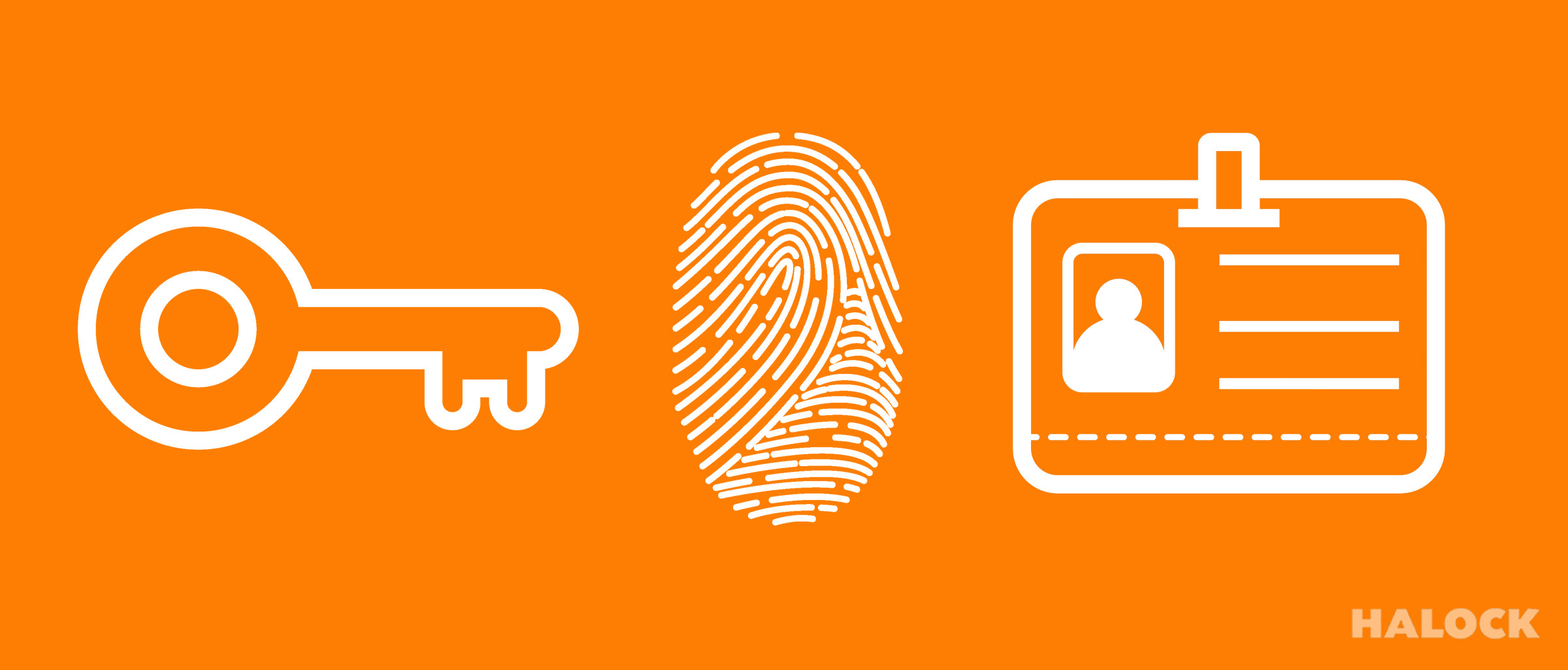Table of contents
Secure authentication and authorization are critical components of any software or application development process. They play a vital role in safeguarding user identity and data, protecting against unauthorized access, and ensuring the privacy and integrity of sensitive information.
In an online banking application, secure authentication and authorization are crucial to protect user accounts and financial data. Implementing multi-factor authentication (MFA), such as requiring a username, password, and a unique verification code sent to a registered device, helps prevent unauthorized access. Additionally, proper authorization ensures that users have appropriate access rights, limiting actions to their account type and preventing unauthorized modifications or data breaches. Failing to implement secure authentication and authorization exposes users to risks like unauthorized access, data breaches, and regulatory non-compliance.

Credits HALOCK Security Labs
Fundamentals of Authentication
Authentication is an important process in the world of cybersecurity, responsible for verifying the identity of users accessing digital systems, applications, or services. By validating user identity, authentication ensures that only authorized individuals gain access to sensitive information, resources, or functionalities. Let's delve deeper into the concept of authentication and how it verifies user identity.
Authentication Methods:
Username and Password: This is one of the most common authentication methods. Users provide a unique username (or email address) and a corresponding password to prove their identity. The system compares the entered credentials with stored records to grant access.
Multi-Factor Authentication (MFA): MFA enhances security by requiring users to provide multiple factors of authentication. This typically includes something the user knows (password), something the user possesses (a physical token or mobile device), or something inherent to the user (biometrics like fingerprints or facial recognition).
Public Key Infrastructure (PKI): PKI employs cryptographic techniques to validate user identity. It involves the use of digital certificates, including a public key and a private key. The server verifies the digital signature created using the private key to authenticate the user.
Single Sign-On (SSO): SSO allows users to authenticate once and gain access to multiple systems or applications without the need to re-enter credentials. It relies on centralized authentication servers or identity providers to validate user identity across different platforms.
Authorization and Access Control
Authorization
Authorization is the process of granting or denying access rights and permissions to authenticated users based on their identity and assigned privileges. It ensures that users can only perform actions that they are authorized to do within a system or application. The authorization process follows successful authentication and involves the enforcement of access policies.
Access Control
Access control refers to the mechanisms and techniques used to regulate and manage user access to resources, systems, or data. It is the broader concept that encompasses authorization and encompasses various strategies for controlling user permissions.
Significance of Authorization and Access Control
Protection against unauthorized access: Authorization and access control mechanisms prevent unauthorized individuals from accessing sensitive resources or performing unauthorized actions.
Data and system security: By enforcing access policies, organizations can safeguard critical data, systems, and intellectual property from unauthorized modifications or breaches.
Compliance and regulatory requirements: Authorization and access control help organizations meet industry-specific compliance requirements, ensuring data privacy and regulatory adherence.
Least Privilege Principle: Implementing appropriate access controls follows the principle of least privilege, granting users only the minimum necessary privileges to perform their tasks. This reduces the risk of accidental or intentional misuse of privileges.
Audit and accountability: Access control mechanisms provide a trail of access events, allowing organizations to monitor user activities, detect anomalies, and maintain audit logs for forensic analysis and accountability purposes.

Secure Storage of User Credentials
Storing passwords and other authentication credentials properly is essential to protect against unauthorized access and data breaches. Some best practices for the secure storage of user credentials:
Hashing and Salt: When storing passwords, it is crucial to hash them using cryptographic hash functions like bcrypt, Argon2, or SHA-256. Hashing converts the password into an irreversible string of characters, making it challenging for attackers to reverse-engineer the original password. Additionally, salting the passwords with a unique random value before hashing adds an extra layer of security, preventing rainbow table attacks.
Strong Password Policies: Encourage users to create strong, complex passwords by implementing password policies. Require a minimum password length, a mix of uppercase and lowercase letters, numbers, and special characters. Enforce password expiration and restrict password reuse to enhance security.
Key Derivation Functions (KDFs): Key derivation functions, like PBKDF2 (Password-Based Key Derivation Function 2) and bcrypt, are specifically designed to slow down password cracking attempts by introducing computational delays. They make brute-force attacks and dictionary attacks more time-consuming and resource-intensive for attackers.
Two-Factor Authentication (2FA): Implementing 2FA adds an extra layer of security. In addition to a password, users are required to provide a second factor, such as a unique verification code sent to their mobile device. Even if the password is compromised, the additional factor makes it significantly more challenging for unauthorized individuals to gain access.
Encryption: For sensitive user information other than passwords, such as social security numbers or credit card details, encrypt the data at rest. Use strong encryption algorithms and ensure that encryption keys are securely managed.
Secure Storage Infrastructure: Ensure that the storage infrastructure, such as databases or file systems, where user credentials are stored, is properly secured. Implement access controls, strong encryption for data in transit and at rest, regular security updates, and monitoring mechanisms to detect any unauthorized access attempts.
Regular Auditing and Monitoring: Regularly audit and monitor the storage systems for any suspicious activities or potential vulnerabilities. Implement intrusion detection and prevention systems, log analysis, and real-time monitoring to detect and respond to security incidents promptly.
Employee Education: Educate employees and developers about secure coding practices, password handling, and the importance of protecting user credentials. Emphasize the significance of avoiding storing plain-text passwords or weakly protected credentials.

OAuth
OAuth is an authorization framework that allows users to grant limited access to their resources (e.g., data, APIs) to third-party applications without sharing their credentials. It enables users to delegate access rights to authorized applications while maintaining control over their data. OAuth follows a flow involving multiple parties:
Resource Owner: The user who owns the protected resources (e.g., a social media account or cloud storage).
Client Application: The application that wants to access the protected resources on behalf of the user (e.g., a mobile app or a web service).
Authorization Server: The server responsible for authenticating the user and issuing access tokens.
Resource Server: The server hosting the protected resources that the client wants to access.
The OAuth flow typically involves the client application obtaining an access token from the authorization server by redirecting the user to an authentication page. Once authorized, the access token is used by the client to make authorized requests to the resource server on behalf of the user.
OpenID Connect
OpenID Connect (OIDC) is an identity layer built on top of OAuth 2.0. It provides a standardized way to authenticate users and obtain identity information from the identity provider. OIDC is primarily used for single sign-on (SSO) scenarios, where a user can log in once and access multiple applications without re-entering credentials.
OIDC introduces the concept of an identity provider (IDP) or an OpenID provider (OP), which authenticates the user and provides information about the user's identity through an ID token. The ID token contains user attributes and acts as a proof of authentication. The protocol follows a similar flow as OAuth but with additional steps to obtain the ID token from the IDP.
By combining OAuth and OpenID Connect, applications can achieve secure authentication, authorization, and identity management. OAuth handles authorization and access delegation, while OpenID Connect enables authentication and identity information exchange.
Continuous Monitoring and Threat Detection
Continuous monitoring and threat detection are essential components of maintaining a secure system. By continuously monitoring APIs and their interactions, organizations can proactively identify and respond to security threats and anomalies. Some key practices include:
Logging and Auditing: Implement robust logging mechanisms to record API requests, responses, and any relevant metadata. Regularly review and analyze logs to identify suspicious activities or security breaches.
Real-Time Monitoring: Employ real-time monitoring tools and techniques to detect abnormal API behaviors, such as sudden increases in traffic, unusual patterns, or unauthorized access attempts.
Intrusion Detection and Prevention Systems (IDPS): Implement IDPS solutions that actively monitor API traffic, analyze network patterns, and detect potential threats or malicious activities. IDPS can trigger alerts or take automated actions to mitigate risks.
Security Information and Event Management (SIEM): Utilize SIEM solutions to centralize and analyze security event data from multiple sources, including API logs, network devices, and security tools. This enables correlation and real-time analysis of security events.
Vulnerability Scanning and Penetration Testing: Regularly conduct vulnerability scans and penetration tests on API endpoints to identify potential weaknesses or vulnerabilities. Address discovered issues promptly to enhance security.

API for Security
API Authentication
API authentication verifies the identity of the client making the API request. It ensures that the requester is a legitimate user or application with proper credentials. Some commonly used API authentication methods include:
API Keys: API keys are unique tokens issued to clients that authenticate their access to the API. Clients include the API key in their requests as a means of identification.
OAuth 2.0: OAuth 2.0 is a widely adopted authentication framework that enables users to grant permissions to third-party applications to access their APIs on their behalf. It involves obtaining access tokens that are used for subsequent API requests.
JWT (JSON Web Tokens): JWT is a compact and self-contained token format that securely represents claims between two parties. It can be used for authentication purposes, where the server verifies the authenticity and integrity of the token.
API Authorization
API authorization ensures that the authenticated client has the necessary permissions to perform specific actions or access certain resources within the API. Authorization controls what the client can do after authentication. Common authorization mechanisms for APIs include:
Role-Based Access Control (RBAC): Using RBAC, access is granted based on the user's role. Roles define a set of permissions, and users are assigned to specific roles based on their authorization requirements.
Scope-Based Authorization: With scope-based authorization, permissions are defined based on specific scopes associated with the API endpoints or resources. Clients must possess the required scope(s) to access the corresponding functionality.
Attribute-Based Access Control (ABAC): ABAC considers various attributes associated with the client, request context, and environment to make authorization decisions. This flexible approach allows for fine-grained access control based on dynamic conditions.

Conclusion
In conclusion, the blog topics covered important aspects of cybersecurity and development. Authentication forms the foundation of secure access control, verifying user identities through methods like passwords, multi-factor authentication, and biometrics. Authorization and access control ensure that authenticated users have appropriate permissions, protecting against unauthorized actions.
By understanding and implementing these concepts, developers and organizations can strengthen their security practices, protect user data, and mitigate risks associated with unauthorized access and data breaches. Emphasizing the importance of secure authentication, authorization, storage, and continuous monitoring fosters a robust cybersecurity posture, enabling safe and reliable digital experiences.

